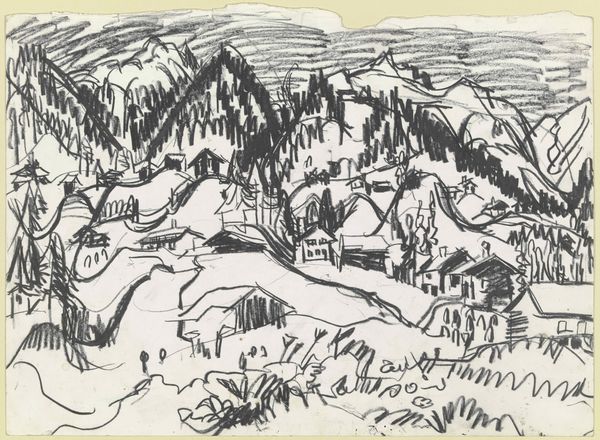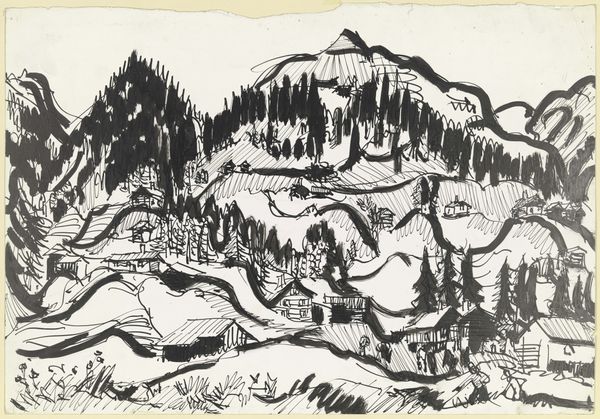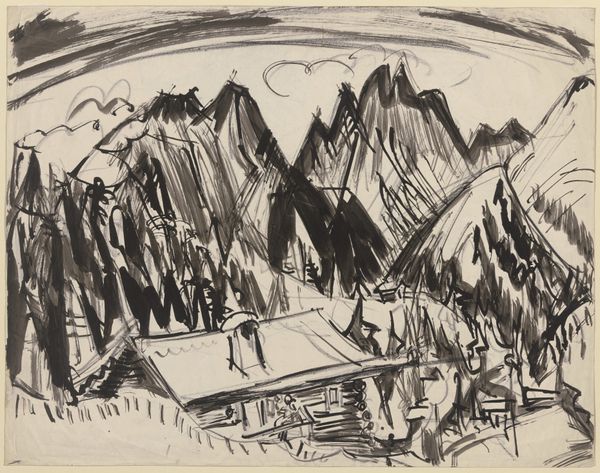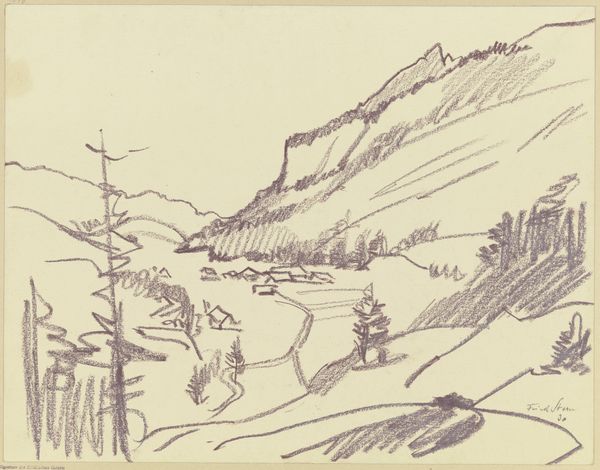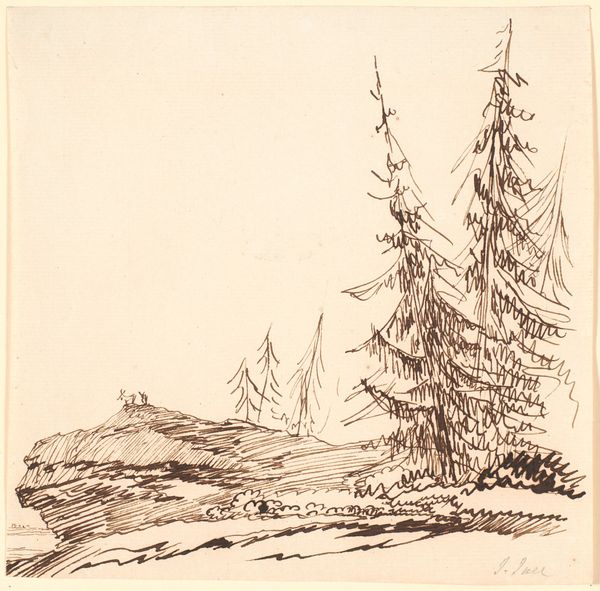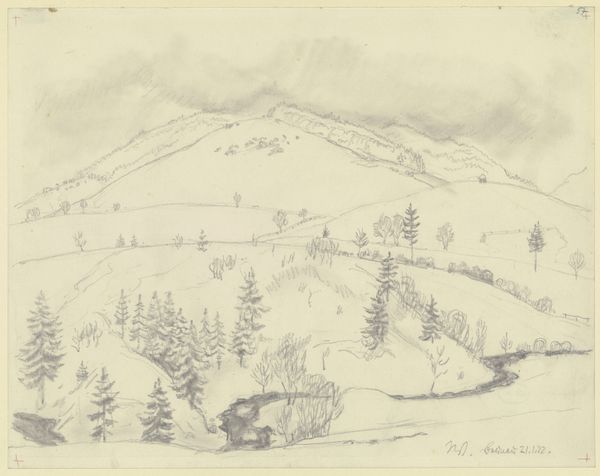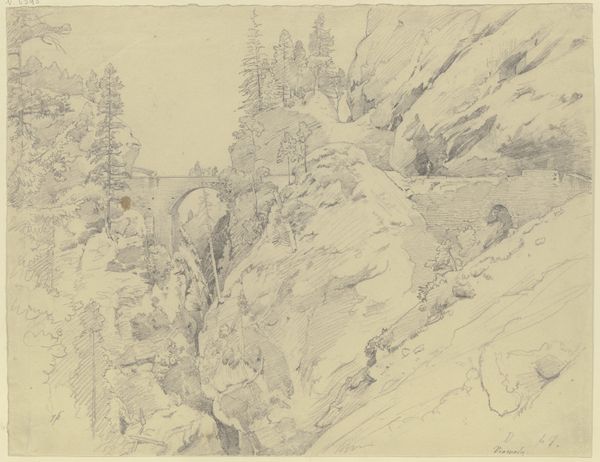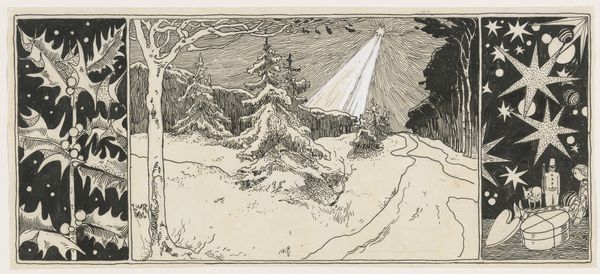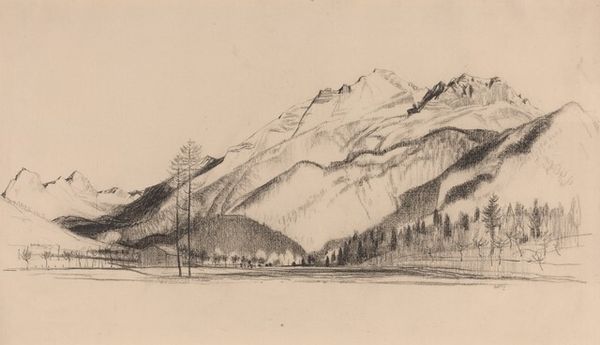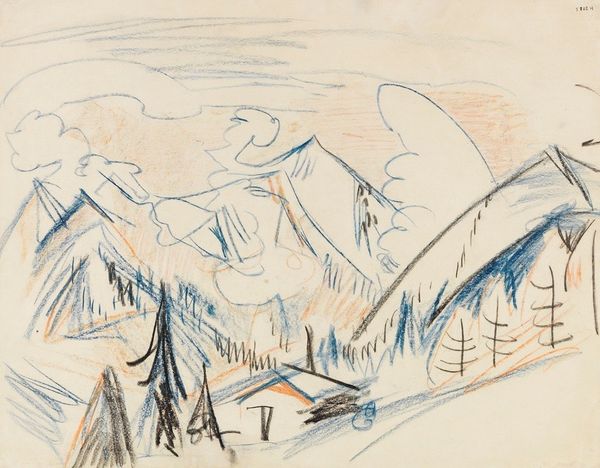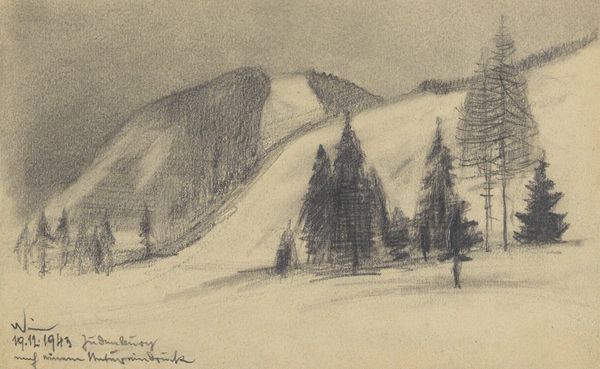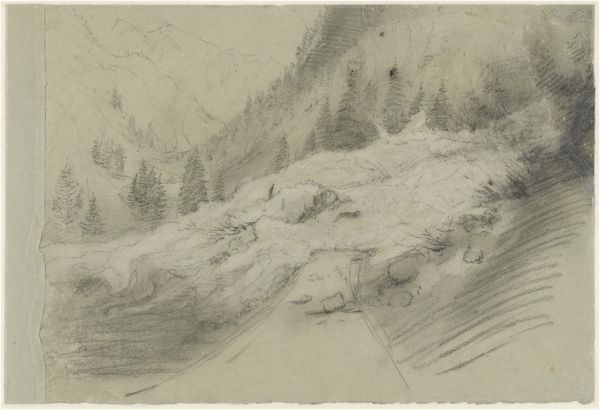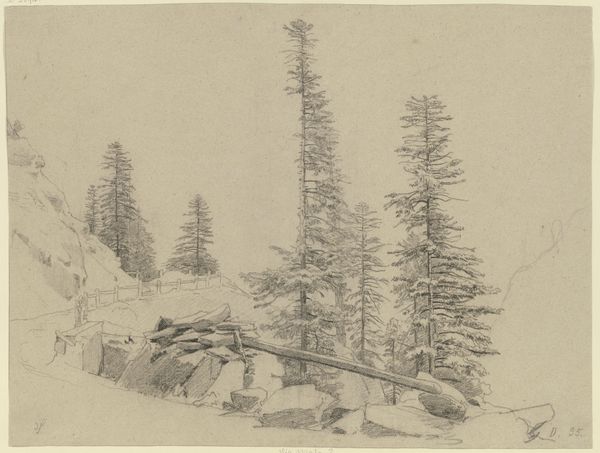
drawing, pencil, chalk, architecture
#
drawing
#
landscape
#
german-expressionism
#
geometric
#
pencil
#
expressionism
#
chalk
#
architecture
Copyright: Public Domain
Curator: Look at this pencil and chalk drawing. Ernst Ludwig Kirchner rendered this landscape, Sertigtal, around 1924. It’s currently held at the Städel Museum. What do you make of it? Editor: It feels…restless. The stark contrast and those sharp, angular lines give everything an agitated energy, even the mountains in the background. It’s not a calming landscape, is it? More like a landscape reflecting a turbulent inner state. Curator: Kirchner's expressionist style always does tend to reflect inner turmoil. But remember, he was deeply influenced by the alpine landscape after moving to Switzerland. Many suggest it offered him solace after his experiences during World War I and his subsequent mental breakdown. Editor: Solace? But these houses nestled among the pines appear almost barricaded! It lacks the picturesque quality you'd expect. Instead, the geometry feels almost defensive. Were these harsher edges considered modern back then? Curator: Certainly, remember how deeply involved the Expressionists were in reshaping German identity, rethinking representation itself. Even landscape painting had a social dimension. This move toward abstraction— the angular shapes, the deliberate breaking down of form – all were part of rejecting traditional academic styles tied to old power structures. Editor: Right, a rejection of tradition by highlighting these shapes, a new vision of representation through fracturing landscapes. But that ruggedness in Kirchner’s strokes—it reflects a genuine physical experience in nature. Perhaps that turmoil stems not only from societal pressures, but an awareness, an understanding of the wildness and ferocity of our nature? Curator: That's a beautiful way to put it! There is definitely a certain awe of raw natural power communicated here. Think of how German Romanticism tried to distill the experience of encountering overwhelming nature into art—that spirit lives on in the Expressionists, albeit transformed and given new meaning. Editor: Exactly. A transformation— taking nature, turning it, showing something much bigger than beautiful views. It shows feelings, a piece of society— history captured. Curator: It does make one ponder how much art is really about showing, and how much it's about channeling, transforming— maybe about what it chooses not to reveal? Editor: Precisely! We're not just gazing upon a scene; we are glimpsing an interpretation. That's how history is remembered, or altered, by generations looking to it for the first time.
Comments
No comments
Be the first to comment and join the conversation on the ultimate creative platform.
